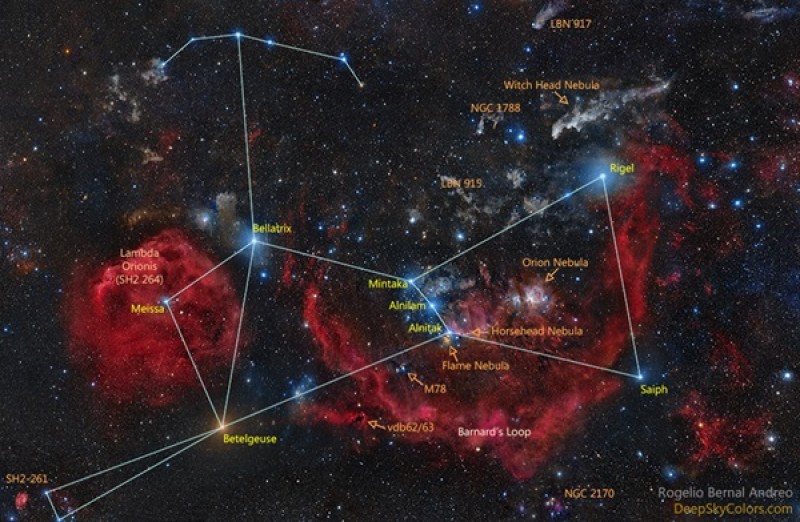
This annotated image of the Orion constellation shows the dim clouds of nebulous, glowing dust that sit in the field. The asterism Orion’s Belt (composed of the stars Altitak, Alnilam, and Mintaka) is visible near center.
The constellation Orion the Hunter appears on its side as it rises, with ruddy Betelgeuse to the left of the three-star belt and blue-white Rigel to the belt’s right.
As Orion climbs higher before dawn — a result of the Earth spinning under the fixed background of stars — the figure rotates so that Betelgeuse lies at the upper left and Rigel at the lower right of the constellation pattern.
Orion the Hunter is just one of 88 constellations officially recognized by the International Astronomical Union; however, it also contains two well-known asterisms and a handful of beautiful nebulae.
The most famous asterism — which is simply a recognizable pattern of stars — is Orion's Belt. This staple of stargazing is made up of three bright stars named Alnitak, Alnilam, and Mintaka. Another asterism, known as Orion's Sword, hangs between Orion's Belt and feet.
Within or near Orion the Hunter are three nebulae that garner a lot of attention from astrophotographers: The Orion Nebula, which bedazzles the center of Orion's Sword; the Horsehead Nebula, located just below Alnitak; and the Witch Head Nebula, which hovers near the bright star Rigel, or Orion's left foot.
Source: http://www.astronomy.com/observing/news/2018/11/winter-is-coming-sayeth-orion-the-hunter